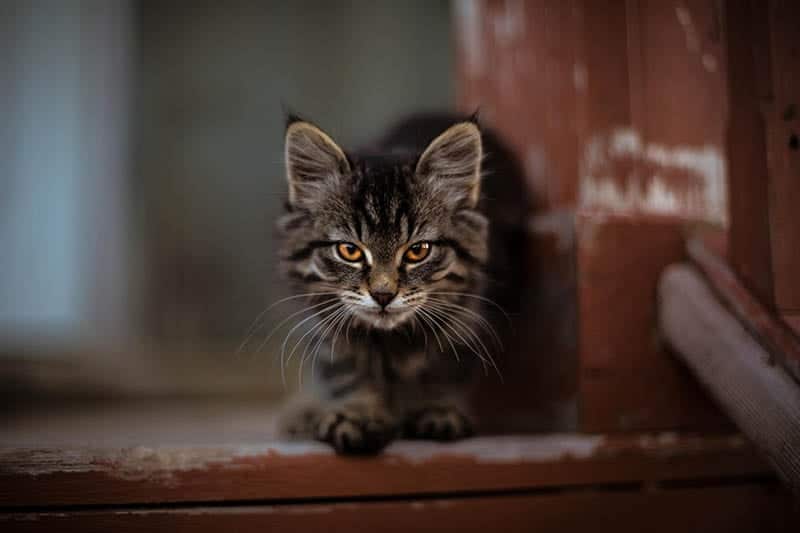Trying to get to know “that one cat” that lurks around your neighborhood? Feral cats are a bit of a mystery. They hide, hunt, and hustle away from humans as much as possible, living in their own little wild world. Today, we share some incredible facts about feral cats you probably didn’t know.
Top 14 Facts About Feral Cats
1. Feral Cats Don’t Meow as Much as Domesticated Cats
Contrary to popular belief, cats typically use scent and body language as their primary source of communication—not meowing. Normal cat behavior shows cats don’t meow much when communicating with other cats.
Interestingly, cats have learned to communicate with humans through meowing. However, since feral cats are seldom in the presence of humans, they don’t meow as much as socialized cats.
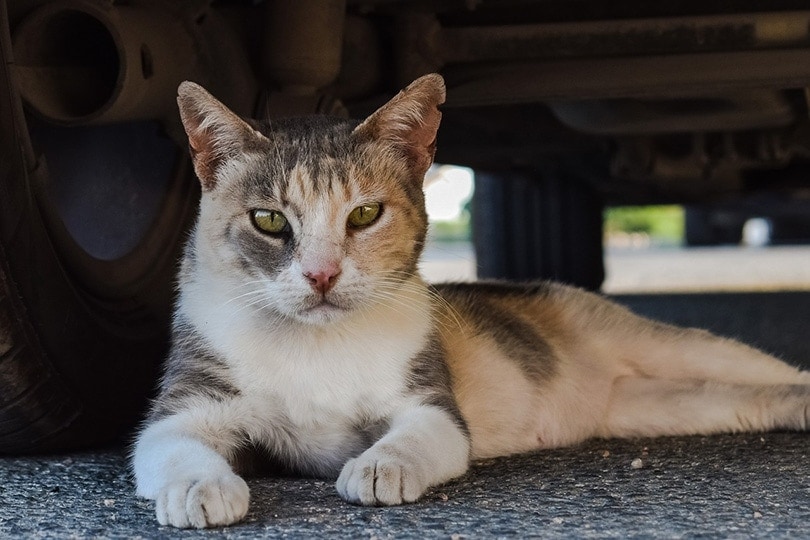
2. Feral Cats Consume a Lot of Bug Protein
A cats gotta eat, and feral cats persistently seek their next protein-rich meal. According to The British Journal of Nutrition, 1.2% of free-range feral cats in North America rely on insects as a protein source.1
3. Feral Males Have Larger Heads
The hormone testosterone allows a male cat’s body to grow larger than a female cat’s. Typically, male cats have larger heads, are more muscular, and even have more prominent cheeks. However, neutered male cats never had testosterone to become thick and muscular.
Of course, the breed also plays a part. For instance, Maine Coons are known for being ample cats, even females. But generally, feral male cats will be larger because they’re not neutered.
4. Feral Cats Are More Active at Night
Cats are nocturnal and like to do much of their hunting and prowling at night, including looking for mates. You may even hear a feral cat howling from afar.
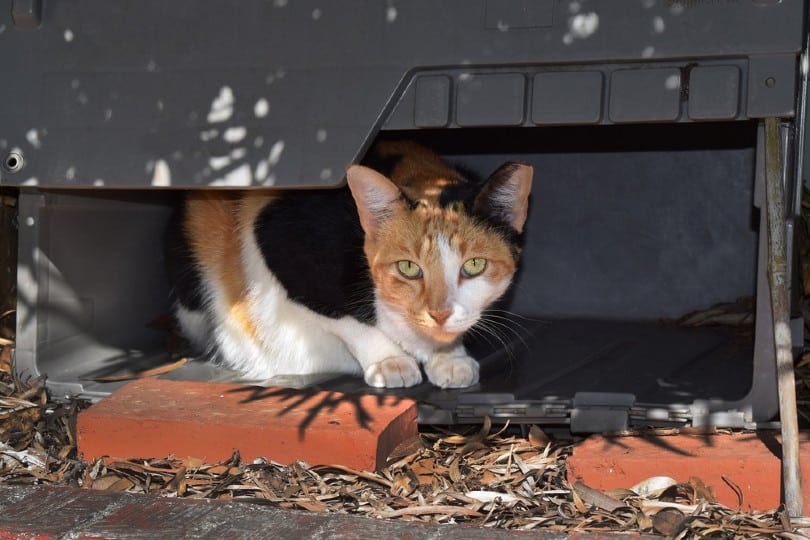
5. Feral Cats Are Wild and Domesticated
Domesticated refers to all Felis domesticus, the term for the common house cat, regardless of whether the cat is socialized. Since feral cats have seldom (or never) interacted with humans and lived as true wild cats, they’re also considered wild Felis domesticus.
6. Feral and Stray Cats Are Not the Same Thing
Stray cats differ from feral cats because they’re used to human interaction and will willingly communicate with humans, unlike feral cats. Even a scared stray cat will exhibit different body language when around humans.
7. Feral Cats Are Often Scared of Humans
Because feral cats seldom interact with humans, they quickly shy away from human interaction. Even eye contact will send a feral cat running.
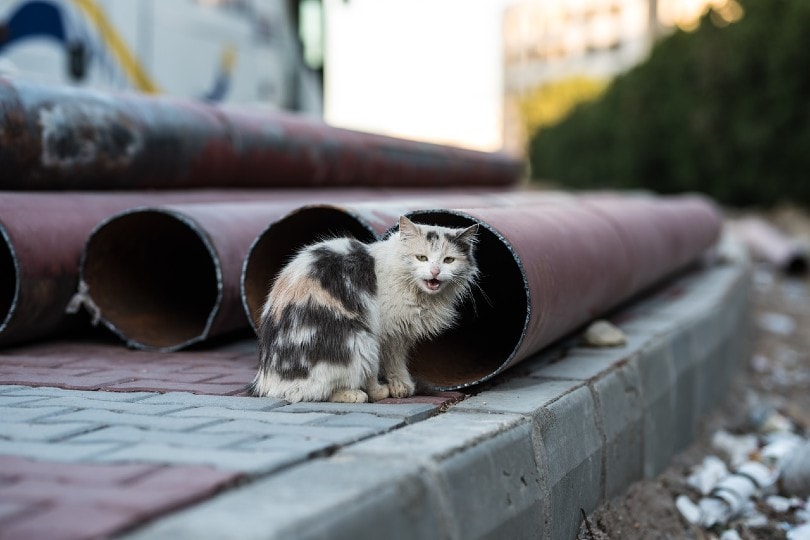
8. Feral Cats Have Kept Coats, While Strays Do Not
Feral cats know a thing or two about survival. It’s hot-wired in their blood to hunt, stalk, and groom without the help of humans. On the other hand, stray cats who once had a home struggle with survival because they don’t do it full-time. They can learn to care for themselves in time, but it’s hard at first.
9. Many Feral Cats Have Tipped Ears
Ear tipping is common for those who practice TNR (trap-neuter-release). This is when intact stray or feral cats are trapped, taken to a vet for a neutering surgery, then released back where they came from.
Knowing if a cat has already been trapped is difficult. So, many vets will clip the top ⅜ inches off a cat’s ear. It signals from afar that this cat can be left alone.
10. TNR Changes Feral Cat Lives
TNR (trap-neuter-release) helps minimize cat overpopulation. Without excessive cat breeding, there is less disease and more food.
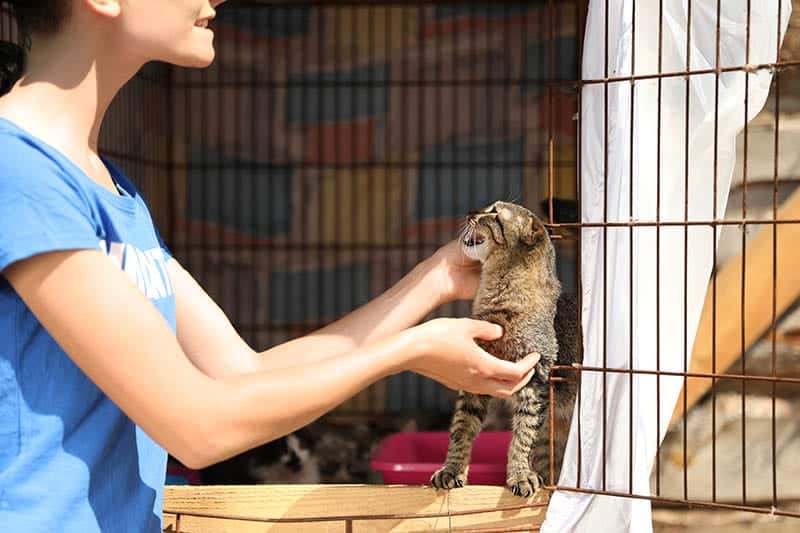
11. Feral Cats Can Be “Community Cats”
A community cat is a homeless cat that is cared for by the community. It has no specific home, owner, or place to eat. Everyone chips in to care for the cat. Feral cats can be community cats just as much as strays, although you might not see them as much.
12. Feral Cats Will Have a Lack of Interest in Household Sounds
Since feral cats aren’t used to the sound of a can opener, the jingle of a favorite toy, or your voice, they’ll ignore these sounds and move on.
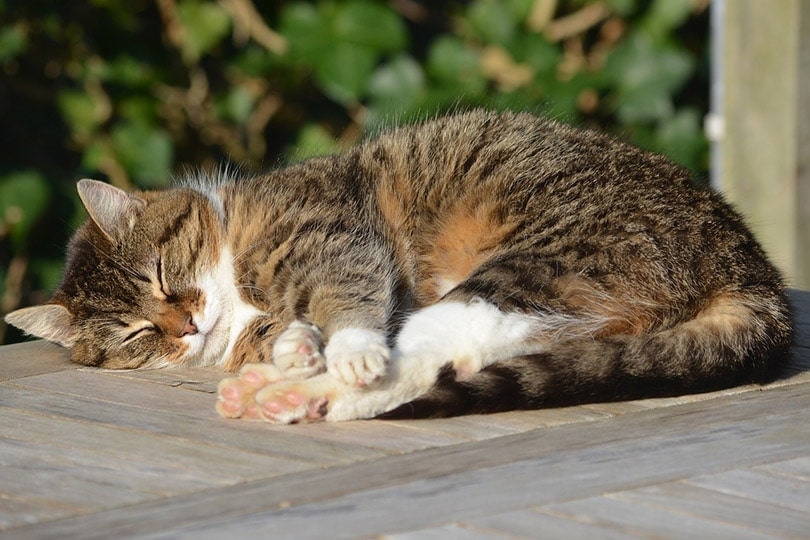
13. Feral Cats Can Be Tamed
It takes time and effort, but feral cats can learn to love and appreciate human interaction like other cats. Just remember that this is extremely challenging and takes tons of patience.
14. Feral Cats Are Best Left on the Streets
Feral cats can be socialized, but it’s tough since they’re used to the wilderness. They have a better chance of surviving the streets and slowly becoming associated through natural interactions. Unfortunately, feral cats are often euthanized when taken to shelters.
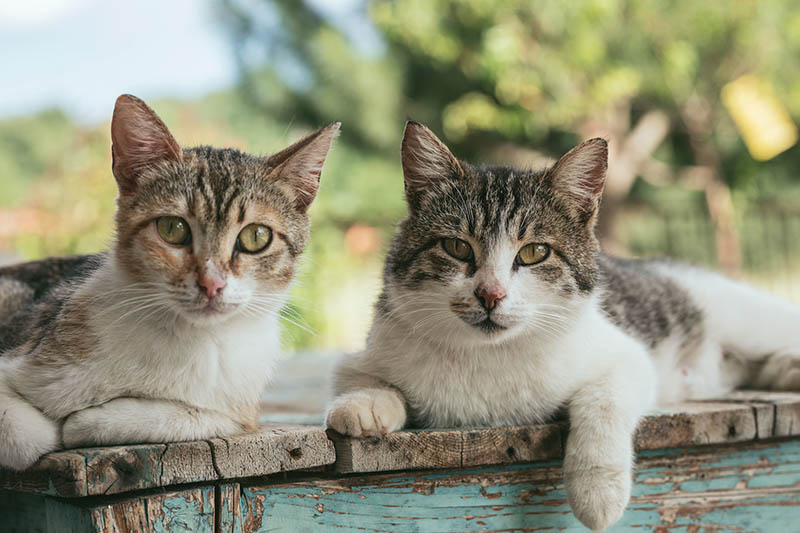
Conclusion
Feral cats are unlike house cats. They don’t shy away from survival, mainly because they have no choice. However, they do shy away from human communication, so don’t expect to become best friends with your community cat, at least not immediately.
Leave out a bowl of food and some water, and make eye contact occasionally. You might see that cat more often!
See Also:
- How to Treat Mange in Feral Cats: 4 Tips and Tricks
- How to Get a Feral Cat Into a Carrier: 14 Tips & Tricks
Featured Image Credit: 42 North, Unsplash
Contents
- Top 14 Facts About Feral Cats
- 1. Feral Cats Don’t Meow as Much as Domesticated Cats
- 2. Feral Cats Consume a Lot of Bug Protein
- 3. Feral Males Have Larger Heads
- 4. Feral Cats Are More Active at Night
- 5. Feral Cats Are Wild and Domesticated
- 6. Feral and Stray Cats Are Not the Same Thing
- 7. Feral Cats Are Often Scared of Humans
- 8. Feral Cats Have Kept Coats, While Strays Do Not
- 9. Many Feral Cats Have Tipped Ears
- 10. TNR Changes Feral Cat Lives
- 11. Feral Cats Can Be “Community Cats”
- 12. Feral Cats Will Have a Lack of Interest in Household Sounds
- 13. Feral Cats Can Be Tamed
- 14. Feral Cats Are Best Left on the Streets
- Conclusion

